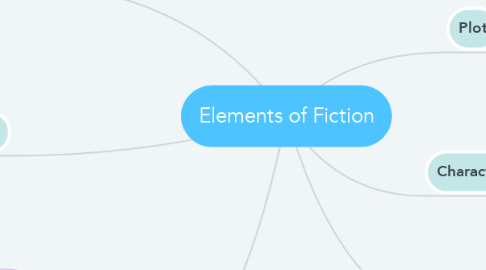
1. Setting
1.1. Place and time of the story.
1.1.1. 1)It must place the reader into the character's world for them to feel.
1.1.2. 2)It is used to submerge the reader into the story.
2. Point of view
2.1. The way of the story is told.
2.1.1. 1)First narrator (a major or minor character): they can move freely within the fictional world.
2.1.1.1. a) His authority is limited.
2.1.1.2. b) He or she is an eyewitness.
2.1.2. 2) Third-person narrator (a nonparticipant in the story):
2.1.2.1. a)Omniscient point of view: when the teller knows everything there is to know about all the characters, both inside and out, what they think, feel, and do.
2.1.2.2. b)Limited omniscient: reveals the thoughts of one character.
3. Style
3.1. Language the author chooses to use in narration.
3.2. Through the style, the reader is able to hear the tone of voice as well as understand their attitude toward the story they're reading (humurous, serious,etc.)
3.2.1. 1) Tone: element used by the writer to convey unstated attitudes toward the subject
3.2.2. 2) Symbols: something that stands for something else. The words that create symbols may be figurative or literal -usually both.
3.2.2.1. a) It isn't the way a thing is described, but the thing indeed.
3.2.2.2. b) They're not understood in the same way by different readers.
4. Plot
4.1. It is a sequence of events in a story and their relation to one another. The plot is basic for this literary form. Can be understood as the interaction of a character with the circumstances.
4.1.1. 1)The first part is called the exposition: where the characters, scene, time, and situation are introduced.
4.1.2. 2)The second part is the rising action: the dramatization of events that complicate the situation and intensify the conflict.
5. Character
5.1. The people who make something happen or produce an effect.
5.1.1. 1)Not always just people, can be things, or animals.
5.1.2. 2)When the character is read, they must engage the reader's emotions by being round or flat, dynamic or static.
6. Theme
6.1. The meaning of a story
6.1.1. 1) Not just a summary of the plot.
6.1.2. 2) It is inseparantly attached to the language of the complete narrative.

